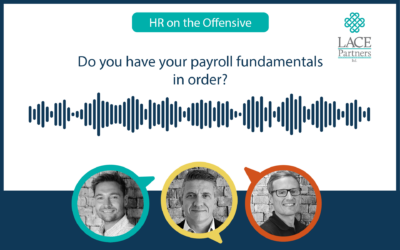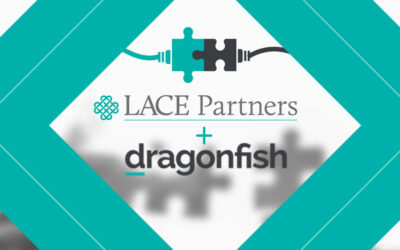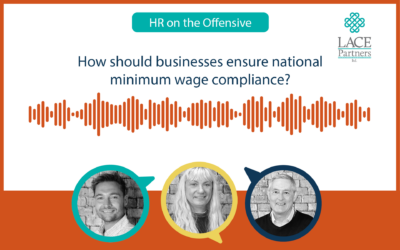We recently spoke to Kevin Metherell from Experian about how organisations can leverage their people data to make the most of their future planning. We looked at the impact the pandemic had on the way in which organisations leverage their people analytics, as well as some of the exciting new ideas that Experian have when it comes to improving engagement and experience amongst their workforce in the not-too-distant future. You can also listen to a podcast which was recorded with Kevin on our HR on the Offensive podcast here.
Getting your people data in the right place – where do you start?
Every organisation is at a different point in their people data and analytics journey. For some organisations the pandemic provided an opportunity to focus in on how to improve their people data and analytics, for others – like the team at Experian – it was a journey that had been many years in the making.
This journey often has an all too familiar tale as it becomes clear to many HR functions that they need to work harder to demonstrate that their data and metrics used can be trusted by the rest of the organisation. From Experian’s perspective their journey to where they are now began over eight years ago and started with large-scale investment in improving the data cleanliness of the business. As we’ve previously noted and has been clear from what Experian realised at the beginning of their digital transformation journey, getting your people data in a trusted position is one of the fundamental building blocks to any digital transformation. Improving the definitions and rigour around the the data is essential in building trust from the other parts of a business.
Predictive analytics and the value it can bring
For the team at Experian, the drive has been to take the business along a journey to where they can increasingly reap the immense value garnered from accurate people data. This has been made possible through a number of ventures including a robust approach to predictive attrition analytics, and also building an analytics tool internally using the same capability from within their Credit Score function – but using employee data. As a result, Experian are able to assess the engagement of their employees on a numerical score produced from weighted data from multiple sources.
In order to justify this investment it was essential for the team to demonstrate the business case for build time. In Experian’s case it was possible by taking data inputs such as cost of recruitment in hiring a replacement employee, loss in productivity (as you bring the new employee up to speed), etc. From there the team used its analytics tool to provide insight of actual cost savings for every 1% saved by reducing the attrition rate within the business, potentially saving millions of pounds for the organisation. That is where defining the value and being able to align projects to the objectives to the goals of the business becomes so valuable.
Its fair to argue that there is more value in enagaging with existing pain points within the business, rather than focusing on new technology implementation. There is an assumption that this is what the business needs, trying to stay ‘ahead of the curve’ when it comes to the latest HR/people technology. However, there is no point in finding something ‘shiny and new’ if it isn’t going to solve the issues that exist in the organisation right now. It is also important to ensure you bring the business along the transformation journey with you.
Co-creating should be your approach to establishing what people data you use and why it is important. You need your team and wider business to ‘buy in’ on the project and see the benefit. When you get that ‘buy in’ you also start to influence the behaviours of the business, as Experian have seen their culture has changed because of the different behaviours they have been able to drive by sharing their journey and working alongside the business, rather than operating within a siloed HR function.
The power of organisational network analysis
How closely do you look at the communication metadata within your organisation?
Not what is being said by employees, in an Orwellian 1984-style ‘Big Brother’ way, but to understand how people like to interact and how often they interact across different mediums.
Organisational network analysis (ONA) enables a business to understand how information flows through the organisation. Who are the key stakeholders in your business in which communication flows through? How well connected are they? And if you were to understand this, how powerful would it be if you were able to see that, so you can try to improve the efficiency of how people can communicate with each other?
ONA has helped businesses like Experian to see where the ‘bridges’ are between two parts of a business. This might be, for example, enabling them to then find ways to help employees get access to information quicker and also to assess which employees can help improve productivity through the flow of communication. Conversely, if you have individuals who are less connected through their communications, ONA can be used to help to identify those individuals who are perhaps not engaging as much and therefore may need greater support from the HR / People function to check in and see if they are a potential flight risk, for example. This is particularly powerful if you gather this information on a regular basis and can see expanding – or contracting – networks of an individual as indicative of them potentially thinking about exiting a business. Or if people are putting in longer hours than usual and potentially feeling overworked, ONA can be used to flag this before the employee reaches a point of no return in terms of their engagement within an organisation.
What does the future look like in the people analytics space?
There is clearly great opportunity in the identification and retention of talent and as some of the examples already listed have shown, having the data to see into the future in terms of hiring and retention will become a greater focus as the market for candidates continues to run hot.
Organisations will start to focus more on internal mobility, asking the question “how do we identify skills within the business that can be transferable across functions to plug gaps in our business?” and people analytics can have a huge role to play if you are capturing the right information – accurately. Even better if you are able to interpret it and act on the results in a timely manner.
Diversity, Equity and Inclusion (DEI) could also form a big part of how an organisation analyses its people data. Of course there are the challenges of automation ‘baking in’ biases into models (unintentionally), but automating data to drive greater people data power will only help to improve our ability to become better at interpreting and acting on the DEI information an organisation has on its people.
If you’d like to discuss your approach to people data and analytics, or how you need to develop an effective strategy on getting your data working better for you, reach out to us using the form below.






